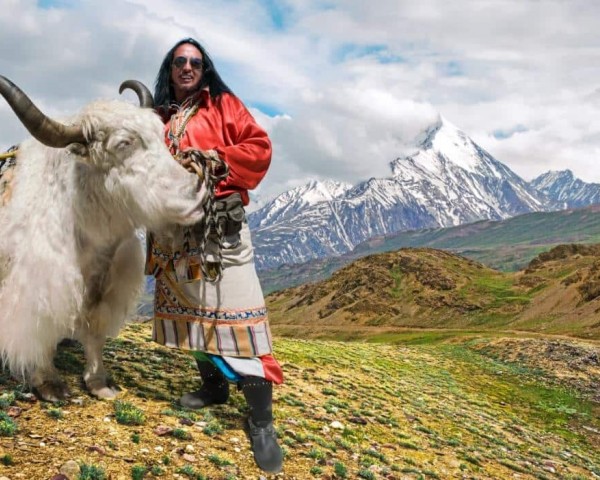The Tibet Autonomous Regional Authority has reported that Tibet is a popular tourist destination for its unique natural landscapes and ethnic culture. Last year, Tibet welcomed 55.17 million domestic and foreign tourists, generating a tourism revenue of 65.1 billion yuan. This represents an increase of 83.7 percent and 60 percent, respectively, setting a new record.
The region hosted nearly 20,000 foreign tourists. In the first quarter of this year, over 4,300 foreigners also visited Tibet. Tourism has genuinely become a flourishing industry.
For instance, Cuogao Village in Nyingchi City, home to 108 households and 438 villagers, relied on logging as their primary source of income in the past. However, last year, the village’s tourism income alone reached 2.36 million yuan, with the per capita income of the villagers reaching 27,000 yuan. This surpassed the average per capita income of rural residents in the region by 7,000 yuan.
In agriculture and animal husbandry, Tibet’s primary output increased by 14.9 percent last year, and its grain output remained above 1 million tons for nine consecutive years. The focus on scientific breeding, which involves the use of advanced breeding techniques and genetic selection to advance the quality and efficiency of livestock, including yak breed purification and rejuvenation, has significantly shortened the time it takes to slaughter yaks, known as the ‘Plateau Boat,’ and has improved economic benefits.
Additionally, private enterprises have been introduced to produce yak bones in China and use them well, contributing to the sustainable development of the local economy and the preservation of the local culture.
Xu Zhitao, vice chairman of the Tibet Autonomous Region, emphasized the unique cultural experiences that await tourists in Tibet. He highlighted the magnificent natural scenery and the harmonious coexistence between the Tibetan people and nature, making Tibet an exceptional tourist destination. During the 13th Five-Year Plan period, Tibet welcomed a staggering 158 million tourists, 2.3 times more than the 12th Five-Year Plan period. Last year alone, Tibet saw an 83.7 percent increase in domestic and foreign tourists. Zhitao expressed confidence in achieving more than double-digit growth in tourism by 2024, promising even more unique cultural experiences for visitors.
While Tibet faces specific challenges in tourism development, such as the need for more convenient transportation infrastructure and further integration of culture and tourism, these are being addressed confidently. For instance, Tibet’s high altitude, averaging over 4,000 meters, does cause concerns about altitude sickness among domestic and foreign tourists. However, the region is committed to providing scientific explanations about altitude sickness and addressing the problems it may cause, ensuring the safety and comfort of all visitors.












